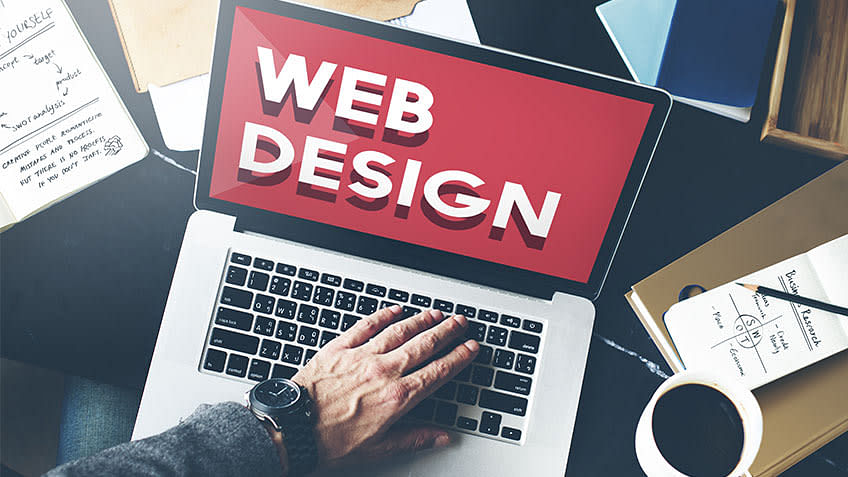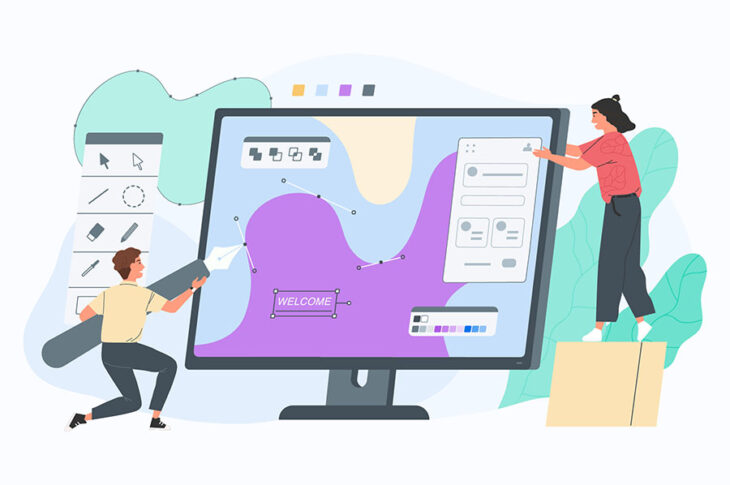Master the Art of Web Design With These Specialist Advice
In today's digital age, having a properly designed and visually attractive web site is important for any type of organization or private seeking to make a mark online. Nevertheless, grasping the art of web style requires more than just an eye for appearances. It involves a deep understanding of customer experience, capability, and the most up to date techniques and patterns. So, just how can you elevate your internet style skills to the next degree? In this conversation, we will certainly check out skilled ideas and techniques that will certainly not just boost the aesthetic appeal of your site but also improve its functionality and efficiency. From choosing the right color palette to incorporating effective call-to-actions, these insights will help you create a site that not just mesmerizes your audience yet also drives results.
Selecting the Right Shade Combination
When choosing a shade palette for web style, it is necessary to take into consideration elements such as brand identity, target market, and general visual goals. The colors made use of in an internet site can significantly influence how customers perceive and interact with the website. Therefore, it is essential to choose shades that straighten with the brand's identity and values. A tech business may opt for a modern-day and smooth shade scheme, while a children's brand name may choose brilliant and lively shades.
Along with brand name identification, the target market need to also be taken into account when picking a shade palette. Various age and demographics might react in different ways to particular colors. Younger audiences might be extra brought in to lively and bold colors, while older target markets may prefer a lot more low-key and innovative tones. Understanding the preferences and assumptions of the target market can aid develop a visually appealing and appealing web site.
Lastly, the total visual objectives of the site should be thought about when selecting a color palette. The shade system need to match the total design and design of the site, producing a visually appealing and cohesive experience for users. Whether the objective is to produce a peaceful and soothing setting or an energised and vibrant atmosphere, the color palette need to be meticulously picked to achieve the wanted visual.

Developing User-Friendly Navigation
To improve the individual experience, it is important to establish easy-to-navigate and user-friendly food selections for web sites. User-friendly navigating is important for assisting site visitors with the various areas and web pages of a site, enabling them to promptly discover the content they are seeking. When creating the navigation food selection, simpleness is essential. Stay clear of jumbling the menu with too many options, as this can overwhelm users and make it difficult for them to choose. Instead, concentrate on giving clear and concise labels for every food selection thing, using familiar terms that individuals can easily understand.

Along with clear labels and rational organization, it is crucial to make the navigating menu quickly available. Put it in a famous location, such as on top of the web page or in a set placement, to make sure that users can conveniently locate and access it from anywhere on the web site. Consider making use of a responsive style method to make sure that the navigation food selection remains available and useful on different gadgets, including cellphones and tablets.
Incorporating Responsive Design Strategies
In order to enhance website capability across different tools, including responsive layout techniques is vital. Receptive style is a web layout approach that permits web sites to adjust and react to different display dimensions and orientations. With the enhancing use of tablets and smartphones, it is critical for web designers to produce internet sites that supply an ideal viewing experience for customers on all tools.
Among the key methods in responsive layout is making use of fluid grids. As opposed to designing fixed-width formats, web developers produce adaptable grids that change and resize based on the screen size. This makes certain that the web content on the website continues to be readable and accessible, despite the device being made use of.
Another important technique is using adaptable photos and media. By establishing the optimum width of photos and video clips to 100%, they will instantly scale down to fit smaller displays. This protects against photos from being removed or misshaped on smart phones.
Furthermore, receptive layout entails utilizing media questions to apply various designs and formats based upon the device's screen size. This allows web designers to produce a smooth experience by customizing the presentation of content according to the tool being used.
Optimizing Web Site Rate and Efficiency
One critical facet of website design is maximizing site speed and performance. In today's hectic i thought about this electronic globe, users have little patience for slow-loading web sites. A slow-moving internet site can result in a bad customer experience, high bounce rates, and reduced search engine positions. To ensure that your internet site performs at its ideal, there are a number of approaches you can apply.
To start with, enhancing photos is important for boosting site rate. Pictures must be correctly pressed and resized to minimize their data dimension without sacrificing top quality. This can be done using picture optimization tools or plugins.
One more vital variable to think about is internet site caching. Caching involves saving fixed variations of website so that they can be quickly recovered rather than creating them from square one each time an individual goes to the website (Webwize Tomball Web Developer). This significantly reduces packing times and improves overall performance
Minifying CSS and JavaScript here are the findings documents is one more reliable strategy. Eliminating unneeded whitespace, comments, and lowering code complexity can significantly boost website speed.
Carrying Out Efficient Call-to-Actions
Producing influential and compelling call-to-actions is a vital element of reliable web layout. A call-to-action (CTA) is a timely or guideline that urges customers to take a details action on a site, such as purchasing, signing up for an e-newsletter, or speaking to the firm. Carrying out efficient CTAs can considerably enhance user interaction and conversion rates.
To produce compelling CTAs, it is very important to utilize clear and concise language that communicates the worth suggestion and benefits of taking the wanted activity. The CTA must be visually prominent on the page, utilizing contrasting shades and layout components that attract the user's focus. Additionally, utilizing action verbs and developing a sense of seriousness can better improve the efficiency of the CTA.
Additionally, it is very important to position the CTA purposefully on the page. Putting it above the layer, where it is instantly noticeable to customers without needing to scroll, can considerably raise its presence and click-through rates. It is additionally helpful to test various variations of CTAs to identify which ones resonate best with individuals and drive the highest conversion prices.
Final Thought
To conclude, mastering the art of website design requires attention to various elements such as color palette choice, easy to use navigating, responsive style techniques, website rate optimization, and reliable call-to-actions. By applying these specialist tips and tricks, web developers can create aesthetically enticing and functional sites that improve user experience and drive desired actions.
The shades used in an internet site can substantially affect exactly how customers engage and regard with the website.In order to enhance website performance across different gadgets, including receptive layout techniques is essential. Receptive design is an internet style technique that enables sites to adjust and respond to different screen sizes and positionings. With the increasing usage of smartphones and tablets, it is important for internet developers to create web sites that offer an optimal viewing experience for individuals on all tools.
